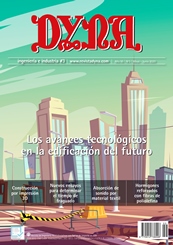COMPREHENSIVE MODEL FOR THE ANALYSIS OF FEASIBILITY OF THE USE OF THERMOACTIVE BUILDING SYSTEMS IN OFFICE BUILDINGS IN CHILE
Abstract
The work addresses the construction of a simplified computational model to evaluate the feasibility of the use of Thermo Active Buildings Systems (TABS) for office buildings in Chile, in order to set the theoretical basis for the design and dimensioning of these systems in the Chilean context, taking into account specific local conditions like its high seismic risk and the extreme variation of climates. To do so, an analytic model has been conceived, using the Engineering Equation Solver (EES) software. Firstly, a simple base model for a typical office building has been developed, and has been next applied to the climate conditions of eight climatic zones, ranging from the Atacama Desert to the Patagonia region. The results show a quite different performance of the system depending of the ambient conditions. They also reveal relevant aspects to be considered when designing TABS, such as the control strategies. The information obtained with the model will eventually serve as a base line to choose the appropriate set of design strategies for each climatic zone.Downloads
Published
2020-05-01
Issue
Section
ARTICULOS

